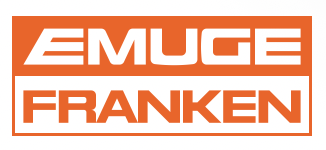Didn't get your question answered? Click here to ask a question, and receive a free drill size pocket card!
Join us for an Ask CTE Contributors webinar led by industry veteran Tom Kowalski, Regional Manager for EMUGE-FRANKEN USA, when he provides invaluable insights on "Avoiding Tap Breakage with These Five Tips". Designed for manufacturers spanning all industries, this webinar will delve into the intricacies of tap selection, drilling considerations, and crucial decision-making that EMUGE-FRANKEN uses for optimizing thread quality and tool life – and avoiding the dreaded broken tap!
In this educational session, Tom will cover:
- The five critical questions that every engineer and machinist must address before selecting a tap, providing a roadmap to efficiently navigate the maze of options.
- Understanding the impact of tool holders on thread quality, tool longevity and mastering the art of selecting the correct lubricant tailored to your specific application requirements.
- When to "Tap Out" and consider the shift towards thread milling, offering invaluable guidance on making this strategic transition, seamlessly.
Drawing upon his 24 years of technical expertise with EMUGE-FRANKEN, Tom will provide practical tips and actionable strategies to empower engineers in mitigating tap breakage risks and elevating machining efficiency.
Don't miss this opportunity to arm yourself with the knowledge and tools needed to transform your tapping and threading operations. Register now to secure your spot.
Download Ask CTE Contributors Slideshow (PDF)
Download EMUGE slideshow (PDF)
Download the Multi Program Brochure
Download the SoftSynchro® High Performance Tap Holders Brochure
Email : Technical@emuge.com
Phone: 800-323-3013
Website: www.emuge.com
Related Glossary Terms
- gang cutting ( milling)
gang cutting ( milling)
Machining with several cutters mounted on a single arbor, generally for simultaneous cutting.
- milling
milling
Machining operation in which metal or other material is removed by applying power to a rotating cutter. In vertical milling, the cutting tool is mounted vertically on the spindle. In horizontal milling, the cutting tool is mounted horizontally, either directly on the spindle or on an arbor. Horizontal milling is further broken down into conventional milling, where the cutter rotates opposite the direction of feed, or “up” into the workpiece; and climb milling, where the cutter rotates in the direction of feed, or “down” into the workpiece. Milling operations include plane or surface milling, endmilling, facemilling, angle milling, form milling and profiling.
- tap
tap
Cylindrical tool that cuts internal threads and has flutes to remove chips and carry tapping fluid to the point of cut. Normally used on a drill press or tapping machine but also may be operated manually. See tapping.
- tapping
tapping
Machining operation in which a tap, with teeth on its periphery, cuts internal threads in a predrilled hole having a smaller diameter than the tap diameter. Threads are formed by a combined rotary and axial-relative motion between tap and workpiece. See tap.
- threading
threading
Process of both external (e.g., thread milling) and internal (e.g., tapping, thread milling) cutting, turning and rolling of threads into particular material. Standardized specifications are available to determine the desired results of the threading process. Numerous thread-series designations are written for specific applications. Threading often is performed on a lathe. Specifications such as thread height are critical in determining the strength of the threads. The material used is taken into consideration in determining the expected results of any particular application for that threaded piece. In external threading, a calculated depth is required as well as a particular angle to the cut. To perform internal threading, the exact diameter to bore the hole is critical before threading. The threads are distinguished from one another by the amount of tolerance and/or allowance that is specified. See turning.


 MEDIA
MEDIA



